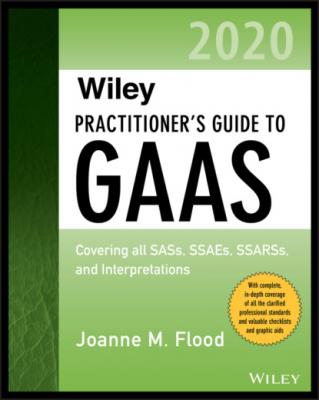Wiley Practitioner's Guide to GAAS 2020. Joanne M. Flood
Читать онлайн.| Название | Wiley Practitioner's Guide to GAAS 2020 |
|---|---|
| Автор произведения | Joanne M. Flood |
| Жанр | Бухучет, налогообложение, аудит |
| Серия | |
| Издательство | Бухучет, налогообложение, аудит |
| Год выпуска | 0 |
| isbn | 9781119596035 |
13 AU-C 402 Audit Considerations Relating to an Entity Using a Service Organization
Types of Service Auditor’s Reports
Considerations in Using a Service Auditor’s Report
AU-C 402 Illustration—Audit Program for an Auditor’s Review of a Service Auditor’s Report
SCOPE
More and more entities are outsourcing activities to service organizations. There is often a belief by the user organization that the service organization can be totally relied upon and that the user organization needs only to have limited, if any, controls.
AU-C 402 is intended to help auditors determine what additional information they might need when auditing an entity that uses a service organization. It expands on the application of AU-C 315 and 330 in obtaining an understanding of the user entity, including internal control. (AU-C 402.01) AU-C 402 also makes it clear that the guidance applies if an entity obtains services from another organization that is part of the entity’s information system. Also, it clarifies the factors that an auditor should use in determining the significance of a service organization’s controls to the user organization’s controls. In other words, the audit procedures that are appropriate when a service organization’s procedures are significant to the audited entity are not optional. The auditor must evaluate the interaction between the audited entity and all service organizations used by that entity. (AU-C 402.02)
A service organization’s services are part of an entity’s information system if they affect any of the following:
Significant classes of transactions
Transaction initiation, authorization, recording, processing, correction, and reporting
Accounting records, supplemental detail, and specific accounts used to initiate, authorize, record, process, correct, transfer to the general ledger, and report
Processing of significant accounting information other than transactions
Financial reporting and journal entry processes
Journal entry controls
(AU-C 402.03)
For example, bank trust departments are service organizations because they invest and service assets for others. An example of a user organization for a bank trust department is an employee benefit plan. Data processing service centers are service organizations because they process transactions and related data for others. Similarly, mortgage bankers that service mortgages for other entities are service organizations.
A bank that processes checking account transactions or a broker who executes securities transactions is not included under the Section’s definition of service organizations. That is because when services are limited to executing transactions specifically authorized by the client, Section 402 is not applicable. The Section also is not applicable to the audit of transactions arising from financial interest in partnerships, corporations, and joint ventures. (AU-C 402.05)
DEFINITIONS
